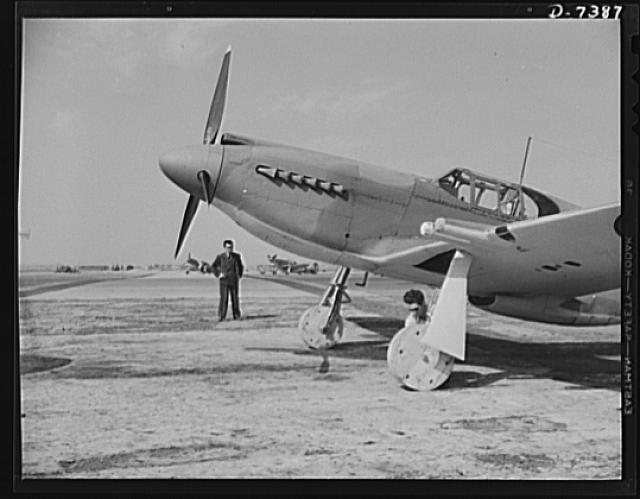RyanC said:b. All except a very small amount of P-47 special tooling has been destroyed.
thanks to you and all members who have posted answers . Simply reinforces my personal views that USAF knew nothing , right from the start .
RyanC said:b. All except a very small amount of P-47 special tooling has been destroyed.
yasotay said:US was not flush with cash in 1945 and wanted to turn to domestic devices to keep employment up as soon as possible.
Just your standard TF-51D. Cavalier also did two-seater conversions, but those had different canopy.
It looks like a 2-seat version of the P-51H
Also, note the similarity between the canopy and that of the T-28. Based on the exhaust, I'd say it had Packard-Merlin power, rather than the Allisons that powered most of the F-82s.It looks like a 2-seat version of the P-51H
I've read the same thing. But it nonetheless looks like a Merlin in the trainer. The Allison did not stay in production very long either. So I'd speculate that the trainer would have been planned around existing engine stocks until Korean War demand consumed the inventory.I've read that the F-82's adoption of the Allison engine was driven by the unavailability of US-built Merlins rather than engineering considerations. All Merlin-specific production hardware was apparently scrapped with the end of P-51 production in compliance with the licensing agreement.

From, Warbird Tech 5 - North American P-51 Mustang,
look for this ?.
I've read that the F-82's adoption of the Allison engine was driven by the unavailability of US-built Merlins rather than engineering considerations. All Merlin-specific production hardware was apparently scrapped with the end of P-51 production in compliance with the licensing agreement.
I've read that the F-82's adoption of the Allison engine was driven by the unavailability of US-built Merlins ...
How did the Allison engine in the P-51H compare with earlier Allisons?
How did horsepower compare with Merlins?
I am especially curious about manifold boost pressures and performance at higher altitudes.
Damn, that radar looks more like a German installation than anything used by the Allies. Any information as to what radar was fitted?Assigned to 336FS, 4FG, 8AF USAAF. This aircraft was a specially modified P-51D Mustang. It had its fuselage fuel tanks removed, a second seat fitted in the rear for the radar operator and mounted a radar antenna on the starboard wing. This aircraft was the personal mount of Colonel Everett W. Stewart.
